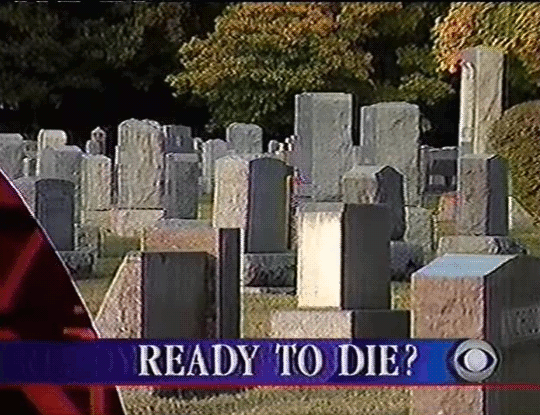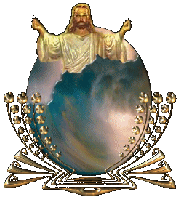



Well, thanks a bunch mr. god..



that was very very cool of you I guess.
| The simulacrum is never what hides the truth -
it is truth that hides the fact that there is none. The simulacrum is
true. -Ecclesiastes If once we were able to view the Borges fable in which
the cartographers of the Empire draw up a map so detailed that it ends up
covering the territory exactly (the decline of the Empire witnesses the
fraying of this map, little by little, and its fall into ruins, though
some shreds are still discernible in the deserts - the metaphysical beauty
of this ruined abstraction testifying to a pride equal to the Empire and
rotting like a carcass, returning to the substance of the soil, a bit as
the double ends by being confused with the real through aging) - as the
most beautiful allegory of simulation, this fable has now come full circle
for us, and possesses nothing but the discrete charm of second-order
simulacra.*1 Today abstraction is no longer that of the map, the double,
the mirror, or the concept. Simulation is no longer that of a territory, a
referential being, or a substance. It is the generation by models of a
real without origin or reality: a hyperreal. The territory no longer
precedes the map, nor does it survive it. It is nevertheless the map that
precedes the territory - precession of simulacra - that engenders the
territory, and if one must return to the fable, today it is the territory
whose shreds slowly rot across the extent of the map. It is the real, and
not the map, whose vestiges persist here and there in the deserts that are
no longer those of the Empire, but ours. The desert of the real itself. In
fact, even inverted, Borges's fable is unusable. Only the allegory of the
Empire, perhaps, remains. Because it is with this same imperialism that
present-day simulators attempt to make the real, all of the real, coincide
with their models of simulation. But it is no longer a question of either
maps or territories. Something has disappeared: the sovereign difference,
between one and the other, that constituted the charm of abstraction.
Because it is difference that constitutes the poetry of the map and the
charm 2of the territory, the magic of the concept and the charm of the real. |

The simulacrum is never what hides the
truth - it is truth that hides the fact that there is none. The simulacrum is
true. -Ecclesiastes If once we were able to view the Borges fable in which the
cartographers of the Empire draw up a map so detailed that it ends up covering
the territory exactly (the decline of the Empire witnesses the fraying of this
map, little by little, and its fall into ruins, though some shreds are still
discernible in the deserts - the metaphysical beauty of this ruined abstraction
testifying to a pride equal to the Empire and rotting like a carcass, returning
to the substance of the soil, a bit as the double ends by being confused with
the real through aging) - as the most beautiful allegory of simulation, this
fable has now come full circle for us, and possesses nothing but the discrete
charm of second-order simulacra.*1 Today abstraction is no longer that of the
map, the double, the mirror, or the concept. Simulation is no longer that of a
territory, a referential being, or a substance. It is the generation by models
of a real without origin or reality: a hyperreal. The territory no longer
precedes the map, nor does it survive it. It is nevertheless the map that
precedes the territory - precession of simulacra - that engenders the territory,
and if one must return to the fable, today it is the territory whose shreds
slowly rot across the extent of the map. It is the real, and not the map, whose
vestiges persist here and there in the deserts that are no longer those of the
Empire, but ours. The desert of the real itself. In fact, even inverted,
Borges's fable is unusable. Only the allegory of the Empire, perhaps, remains.
Because it is with this same imperialism that present-day simulators attempt to
make the real, all of the real, coincide with their models of simulation. But it
is no longer a question of either maps or territories. Something has
disappeared: the sovereign difference, between one and the other, that
constituted the charm of abstraction. Because it is difference that constitutes
the poetry of the map and the charm
2of the territory, the magic of the
concept and the charm of the real. This imaginary of representation, which
simultaneously culminates in and is engulfed by the cartographers mad project of
the ideal coextensivity of map and territory, disappears in the simulation whose
operation is nuclear and genetic, no longer at all specular or discursive. It is
all of metaphysics that is lost. No more mirror of being and appearances, of the
real and its concept. No more imaginary coextensivity: it is genetic
miniaturization that is the dimension of simulation. The real is produced from
miniaturized cells, matrices, and memory banks, models of control - and it can
be reproduced an indefinite number of times from these. It no longer needs to be
rational, because it no longer measures itself against either an ideal or
negative instance. It is no longer anything but operational. In fact, it is no
longer really the real, because no imaginary envelops it anymore. It is a
hyperreal, produced from a radiating synthesis of combinatory models in a
hyperspace without atmosphere. By crossing into a space whose curvature is no
longer that of the real, nor that of truth, the era of simulation is inaugurated
by a liquidation of all referentials - worse: with their artificial resurrection
in the systems of signs, a material more malleable than meaning, in that it
lends itself to all systems of equivalences, to all binary oppositions, to all
combinatory algebra. It is no longer a question of imitation, nor duplication,
nor even parody. It is a question of substituting the signs of the real for the
real, that is to say of an operation of deterring every real process via its
operational double, a programmatic, metastable, perfectly descriptive machine
that offers all the signs of the real and short-circuits all its vicissitudes.
Never again will the real have the chance to produce itself - such is the vital
function of the model in a system of death, or rather of anticipated
resurrection, that no longer even gives the event of death a chance. A hyperreal
henceforth sheltered from the imaginary, and from any distinction between the
real and the imaginary, leaving room only for the orbital recurrence of models
and for the simulated generation of differences. THE DIVINE IRREFERENCE OF
IMAGES
3To dissimulate is to pretend not to have what one has. To simulate
is to feign to have what one doesn't have. One implies a presence, the other an
absence. But it is more complicated than that because simulating is not
pretending: "Whoever fakes an illness can simply stay in bed and make everyone
believe he is ill. Whoever simulates an illness produces in himself some of the
symptoms" (Littre). Therefore, pretending, or dissimulating, leaves the
principle of reality intact: the difference is always clear, it is simply
masked, whereas simulation threatens the difference between the "true" and the
"false," the "real" and the "imaginary." Is the simulator sick or not, given
that he produces "true" symptoms? Objectively one cannot treat him as being
either ill or not ill. Psychology and medicine stop at this point, forestalled
by the illness's henceforth undiscoverable truth. For if any symptom can be
"produced," and can no longer be taken as a fact of nature, then every illness
can be considered as simulatable and simulated, and medicine loses its meaning
since it only knows how to treat "real" illnesses according to their objective
causes. Psychosomatics evolves in a dubious manner at the borders of the
principle of illness. As to psychoanalysis, it transfers the symptom of the
organic order to the unconscious order: the latter is new and taken for "real"
more real than the other - but why would simulation be at the gates of the
unconscious? Why couldn't the "work" of the unconscious be "produced" in the
same way as any old symptom of classical medicine? Dreams already are.
Certainly, the psychiatrist purports that "for every form of mental alienation
there is a particular order in the succession of symptoms of which the simulator
is ignorant and in the absence of which the psychiatrist would not be deceived."
This (which dates from 1865) in order to safeguard the principle of a truth at
all costs and to escape the interrogation posed by simulation - the knowledge
that truth, reference, objective cause have ceased to exist. Now, what can
medicine do with what floats on either side of illness, on either side of
health, with the duplication of illness in a discourse that is no longer either
true or false? What can psychoanalysis do with the duplication of the discourse
of
4the unconscious in the discourse of simulation that can never again be
unmasked, since it is not false either?*2 What can the army do about simulators?
Traditionally it unmasks them and punishes them, according to a clear principle
of identification. Today it can discharge a very good simulator as exactly
equivalent to a "real" homosexual, a heart patient, or a madman. Even military
psychology draws back from Cartesian certainties and hesitates to make the
distinction between true and false, between the "produced" and the authentic
symptom. "If he is this good at acting crazy, it's because he is." Nor is
military psychology mistaken in this regard: in this sense, all crazy people
simulate, and this lack of distinction is the worst kind of subversion. It is
against this lack of distinction that classical reason armed itself in all its
categories. But it is what today again outflanks them, submerging the principle
of truth. Beyond medicine and the army favored terrains of simulation, the
question returns to religion and the simulacrum of divinity: "I forbade that
there be any simulacra in the temples because the divinity that animates nature
can never be represented." Indeed it can be. But what becomes of the divinity
when it reveals itself in icons, when it is multiplied in simulacra? Does it
remain the supreme power that is simply incarnated in images as a visible
theology? Or does it volatilize itself in the simulacra that, alone, deploy
their power and pomp of fascination - the visible machinery of icons substituted
for the pure and intelligible Idea of God? This is precisely what was feared by
Iconoclasts, whose millennial quarrel is still with us today.*3 This is
precisely because they predicted this omnipotence of simulacra, the faculty
simulacra have of effacing God from the conscience of man, and the destructive,
annihilating truth that they allow to appear - that deep down God never existed,
that only the simulacrum ever existed, even that God himself was never anything
but his own simulacrum - from this came their urge to destroy the images. If
they could have believed that these images only obfuscated or masked the
Platonic Idea of God, there would have been no reason to destroy them. One can
live with the idea of distorted truth. But their metaphysical despair came from
the idea that the image
5didn't conceal anything at all, and that these
images were in essence not images, such as an original model would have made
them, but perfect simulacra, forever radiant with their own fascination. Thus
this death of the divine referential must be exorcised at all costs. One can see
that the iconoclasts, whom one accuses of disdaining and negating images, were
those who accorded them their true value, in contrast to the iconolaters who
only saw reflections in them and were content to venerate a filigree God. On the
other hand, one can say that the icon worshipers were the most modern minds, the
most adventurous, because, in the guise of having God become apparent in the
mirror of images, they were already enacting his death and his disappearance in
the epiphany of his representations (which, perhaps, they already knew no longer
represented anything, that they were purely a game, but that it was therein the
great game lay - knowing also that it is dangerous to unmask images, since they
dissimulate the fact that there is nothing behind them). This was the approach
of the Jesuits, who founded their politics on the virtual disappearance of God
and on the worldly and spectacular manipulation of consciences - the evanescence
of God in the epiphany of power - the end of transcendence, which now only
serves as an alibi for a strategy altogether free of influences and signs.
Behind the baroqueness of images hides the eminence grise of politics. This way
the stake will always have been the murderous power of images, murderers of the
real, murderers of their own model, as the Byzantine icons could be those of
divine identity. To this murderous power is opposed that of representations as a
dialectical power, the visible and intelligible mediation of the Real. All
Western faith and good faith became engaged in this wager on representation:
that a sign could refer to the depth of meaning, that a sign could be exchanged
for meaning and that something could guarantee this exchange - God of course.
But what if God himself can be simulated, that is to say can be reduced to the
signs that constitute faith? Then the whole system becomes weightless, it is no
longer itself anything but a gigantic simulacrum - not unreal,
6but a
simulacrum, that is to say never exchanged for the real, but exchanged for
itself, in an uninterrupted circuit without reference or circumference. Such is
simulation, insofar as it is opposed to representation. Representation stems
from the principle of the equivalence of the sign and of the real (even if this
equivalence is Utopian, it is a fundamental axiom). Simulation, on the contrary,
stems from the Utopia of the principle of equivalence, from the radical negation
of the sign as value, from the sign as the reversion and death sentence of every
reference. Whereas representation attempts to absorb simulation by interpreting
it as a false representation, simulation envelops the whole edifice of
representation itself as a simulacrum. Such would be the successive phases of
the image: it is the reflection of a profound reality; it masks and denatures a
profound reality; it masks the absence of a profound reality; it has no relation
to any reality whatsoever; it is its own pure simulacrum.

.jpg)